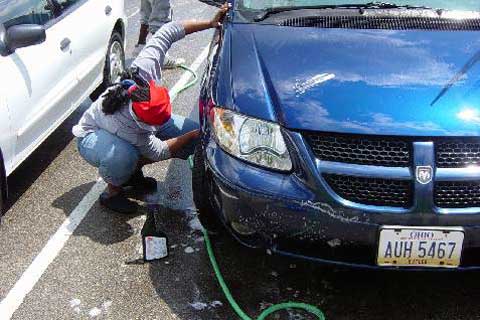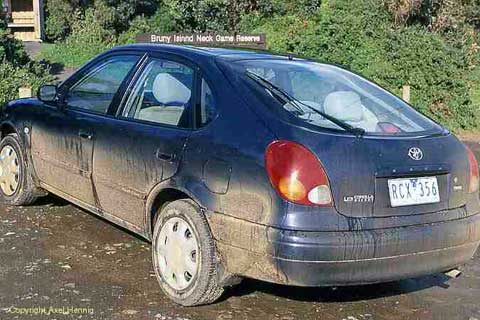
Washing your car or truck is a weekend ritual for many of us. But are you doing it correctly for maximum protection of your sizeable investment? Here are some suggestions that help you do a better job of cleaning while providing maximum protection to the finish.
If you want to preserve the finish for a long time, avoid car washes. Even the brushless ones probably use soaps that can breakdown the wax protection and often they recycle the waste water. However, a car wash is better than months sitting under a coat of dirt and grim. A big benefit of hand washing is that you can closely inspect the body for scratches and dings before they rusting starts.
Use a large bucket filled with warm, not hot water. Rinse the bucket thoroughly after each use. Don't use household soap or dish washing detergents. A tablespoon of very mild tallow soap will do the trick without dulling the finish. However, store-bought car wash soaps are better than than a steady diet of car washes.
Add a teaspoon of salad oil the wash water. It will react with the soap, dispersing thousands of tiny particles that cling to the grit and dirt so that it glides of the surface without scratching. It also increases sudsing action when combined with the mild soap.
Terry cloth towels are great for both washing and drying. Hand towels are the right size for washing and bath size are great for drying. These towels should be "dedicated" for car washing and washed after each use. Wash in hot water using a small amount of mild, non-phosphate based laundry detergent. Machine dry without fabric softeners. Drying outside increases the chance of the towels picking up dirt and pollutants that can harm the surfaces.
When drying, use one towel to gently push the water off the car and another to dry immediately before water spots form. Before you cover or put the car away, open all doors, plus hood and trunk lid so door jams and seals have a chance to dry out. Check the drain holes to make sure they are not plugged.

Next you are ready to do the wheels. Do not wash the wheels right after the car has been run and the brakes are hot. The sudden temperature change can damage the wheels and disc brake rotors. Brake dust is the main culprit in making wheels dirty. The adhesive used to mold brake pads can etch and pit the wheels if left in contact with the wheels when they are hot. This includes not only aluminum and steel "mag" type wheels, but also painted and chrome wheels.
Use a mild, non-corrosive, non-acidic, non-alkaline wheel cleaner that will break the bond between the brake pad dust and the wheel material. Keep away from cleaners that warn about being caustic to your skin since they are likewise harmful to your car's "skin." Add as teaspoon of salad oil for same reason a when washing the car body. For best results apply the wheel cleaner to dry wheels with a soft brush and then rinse with cool water.
Towel the wheels dry using different towels than used for the bodywork. Rinse and dry each wheel individually so the cleaner doesn't have a chance to dry on the wheel. Waxing the wheels will not only make them easier to clean but will also make them less susceptible to damage from the brake dust.
Whatever you do, don't use steel wool or scrub pads. Likewise don't use the silicon based tire dressing since they can damage wheels and tires and even glaze brake rotors.
Rust, even in parts of the country where salt is used on winter roads, is a less of problem today as it was years ago. Automakers have solved most rust problems by using plastic fenders, bumpers, facias and other parts previously prone to rusting. Except for roofs, metal body panels are now mostly galvanized. Trim and emblems are now glued on eliminating holes and clips that were often a breeding ground for rust. Electrostatic charging help paint primer adhere to the metal and locations difficult to access are treated to protective coatings. Even so, cars and trucks will still rust if neglected. Since rust often starts at tiny scratches and stones chips in the paint, repair them. Wash under vehicles inside front fenders and along trim. Flush dirt out of corners.




